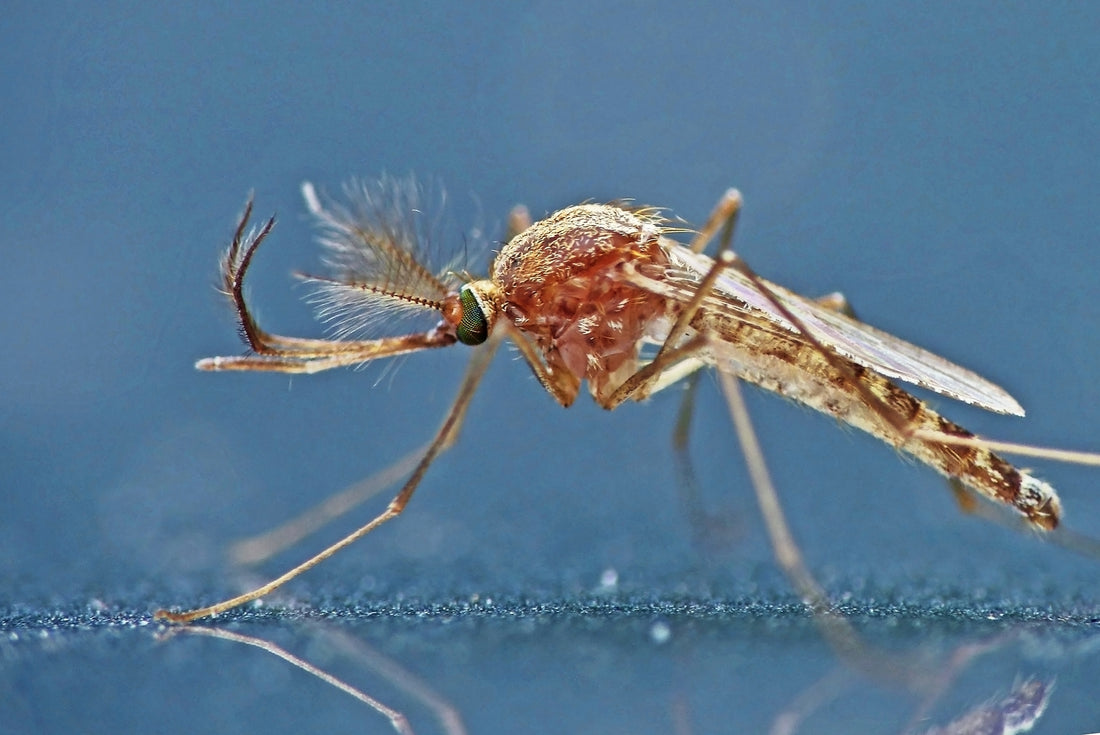Balancing Mosquito Management and Protecting Pollinators
Most of us can agree on two things: we don’t enjoy mosquitoes, and we want to protect native pollinators. Mosquitoes fill a curious role in our lives, where they simultaneously have both a positive (no, really) and a negative impact to the ecosystem and human wellbeing, respectively. As unpleasant as they may seem, they are an essential part of the ecosystems where they exist, occasionally acting as pollinators for native plants, and as essential prey for many larger animals. However, many mosquito species are also well-known disease vectors in birds, mammals, and humans, and are responsible for more human deaths than any other animal. As such, let’s look at how to balance responsible mosquito management while simultaneously protecting our native landscapes and pollinators.
A responsible mosquito management program should always follow an integrated pest management approach, where any actions taken should be the most ecologically sensitive possible to limit negative impacts to human and ecological health. Using this approach, the first step is to identify your goal(s), which should not be the total eradication of all mosquitoes. Not only is this not economically feasible, but it is also potentially catastrophically harmful to the environment as mosquitoes are significant prey for dragonflies, bats, and many other beneficial animals. There is also not a need to eradicate all mosquitoes, as many species such as the floodwater mosquito Aedes vexans are not disease carriers but are simply considered ‘nuisance’ mosquitoes. In Illinois, the greatest risk to human health is from Culex mosquitoes, but we recommend checking with your local health department to see what disease vectors are known in your area. Using this information, your goal should be something like ‘controlling disease-vector species where they are likely to encounter human activity.’ This requires scouting prior to control activities, to understand which disease vector species occur in your area, where they may intersect with human activity, and what limitations you may have for control methods.
Once you have a stated goal, a target species, and areas of concern, you should begin a surveillance program to check for the presence of these species. The best surveillance programs will focus on identifying larval breeding sites, and bodies of water where these species may lay eggs. Where you check (discarded tires, ponds, wetlands, or seasonally flooded areas) and how frequently you check depends on the target species. If the target larvae are found and identified, then control actions can take place. This is where the balance between mosquito control and pollinator protection truly takes place.
Often the most significant concern with mosquito control is spraying for adult mosquitoes, as many of these products are harmful to other insects (including many pollinators) that come into contact with them. Spraying for adult mosquitoes is also ineffective at long-term control: only those adult mosquitoes in the spray zone are affected, any others outside of the zone will not be harmed. The effects of adult spraying as also very short-term, as a new brood of mosquitoes may hatch out of the water the very next day. The great news is that there is a much more effective and ecologically sensitive way to reduce mosquitoes that do not harm pollinators: source reduction. This means eliminating sites where mosquitoes breed, stopping them at the source. This can be as simple as draining tires, pots, birdbaths, and other artificial bodies of water, or utilizing ecologically benign larvicides that are specific to your target species. By eliminating or treating these breeding sources, you are stopping future broods of mosquitoes from emerging and protecting pollinators from potentially fatal spraying.
In some extreme cases, spraying adult mosquitoes for a temporary knock-down may still be recommended by public health professionals. Following an Integrated Pest Management approach, this should be the last option considered, and should only be performed during a public health emergency. One thing you can do to protect pollinators is to check with your local municipality or mosquito abatement district to see if your area can be removed from the spray zone, or if you can be notified prior to spraying. If not, and your property has sensitive plants (such as milkweed, which may have monarch caterpillars), you can attempt to cover these plants with something like row cloth to prevent the spray from contacting the plants. Beekeepers may also be interested in registering their hives in driftwatch.org, a voluntary reporting site for crop growers, beekeepers, and pesticide operators. If your colonies are registered, then any pesticide applicators choosing to use this site will be aware of the colonies and can contact you prior to application.
Of course, personal protection should always be taken to prevent mosquito bites while outdoors. This can include using insect repellant (20-30% DEET), wearing long sleeves and pants, and avoiding being outdoors during dusk and dawn when Culex mosquitoes are most active.
By following an Integrated Pest Management approach, focusing on source reduction, and protecting plants from spraying, you can find a balance between controlling harmful mosquitoes and protecting your natural areas and the pollinators within them. Also, the best way to protect pollinators and provide a balanced ecosystem is to restore native landscapes. You can find information on how to restore landscapes on our blog, our Native Seed Best Management Practices, and our resources on our website. For more information on how else to promote local pollinators, contact us for a free consultation on how to make your restoration area, solar farm, or other large property pollinator-ready!
Andres Ortega
Ecologist

